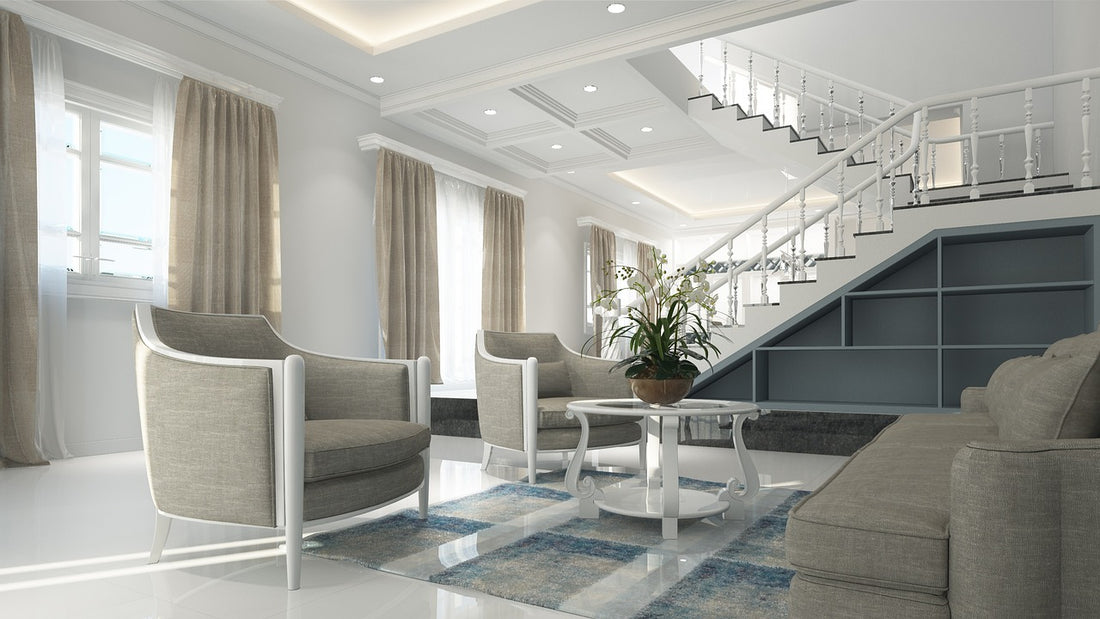Your living space extends beyond being a mere area for watching TV or entertaining guests; it's where you relax, unwind, and truly feel at home. Whether you're starting from scratch or looking to make updates, there are key principles to bear in mind when designing your ideal living room. From selecting the right color palette to choosing the perfect furniture, this guide will take you through the steps to create a living room that mirrors your style and caters to your comfort needs.
Step 1: Define Your Style
Before delving into decorating, take a moment to pinpoint your design style. Whether it's a modern, minimalist aesthetic or a warm, rustic feel, your personal style serves as the foundation for your décor choices. Gather inspiration from magazines, Pinterest, or design blogs for a clearer vision.
Step 2: Utilize Existing Features
Evaluate the room's current features, such as wall color, flooring type, and space dimensions. If working with a smaller room, focus on functional yet stylish pieces that won't overwhelm the space.
Step 3: Develop a Floor Plan
The furniture layout significantly influences the room's overall ambiance. Measure the space and create a floor plan to visualize the placement of each furniture piece and the remaining space for additional elements.
Step 4: Establish a Focal Point
Every room should have a focal point, be it a striking artwork, a standout piece of furniture, or a fireplace. This focal point anchors the room, serving as the focal point around which other elements are arranged.
Step 5: Select Appropriate Furniture
Sofas and Chairs: Opt for comfortable, durable pieces that align with your design style. In smaller living rooms, consider a sectional sofa to maximize seating without occupying too much space.
Coffee Table: Choose a coffee table that complements the sofa and chairs in terms of height, color, and style—both functional and decorative.
Storage: Consider your storage needs; shelves, cabinets, or entertainment units can be practical and aesthetically pleasing.
Step 6: Mind the Color Palette
A cohesive color palette unifies the room's various elements. Stick to two or three main colors and introduce neutral tones for balance. Lighter shades create a spacious feel, while darker hues foster a cozy atmosphere.
Step 7: Integrate Texture and Patterns
Add depth and interest by incorporating diverse textures and patterns. Cushions, throws, and rugs are excellent choices, providing an easy way to refresh the look without altering larger furniture pieces.
Step 8: Illuminate Effectively
Ambient Lighting: Utilize floor lamps or ceiling lights for general illumination.
Task Lighting: Reading lamps and table lamps are ideal for focused tasks.
Accent Lighting: Employ spotlights or wall lights to highlight artwork or architectural features.
Step 9: Accessorize
Art: Personalize the space with artworks that resonate with you.
Plants: Bring life and color into the room with potted plants.
Decorative Items: Small sculptures, books, and trinkets add a touch of personality.
Step 10: Review and Adjust
Living spaces evolve, so feel free to tweak or swap out items over time. The crucial aspect is maintaining a room that reflects your tastes and personality.
Conclusion
Crafting a living room that combines beauty and functionality is a rewarding experience. By considering your style, the room's layout, and the elements of a well-balanced design, you can create a space you're proud to showcase and delighted to call home.

